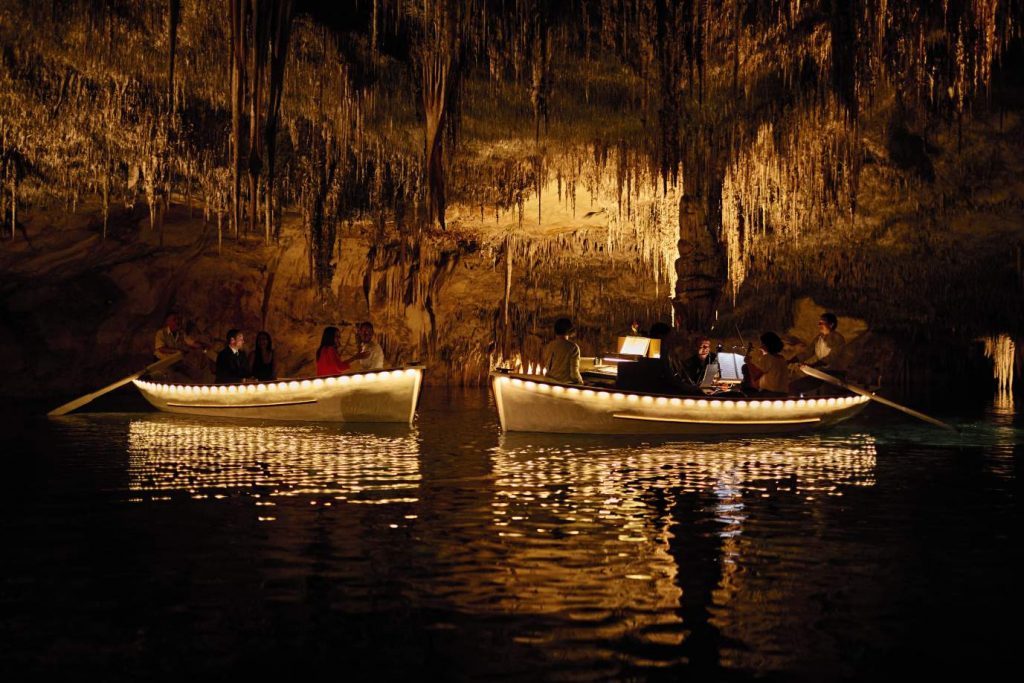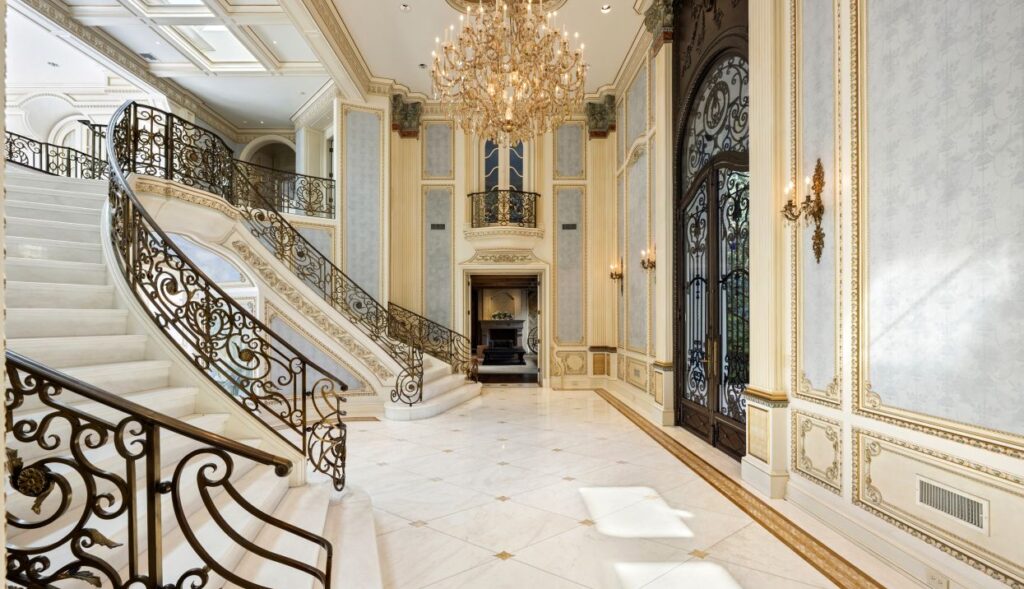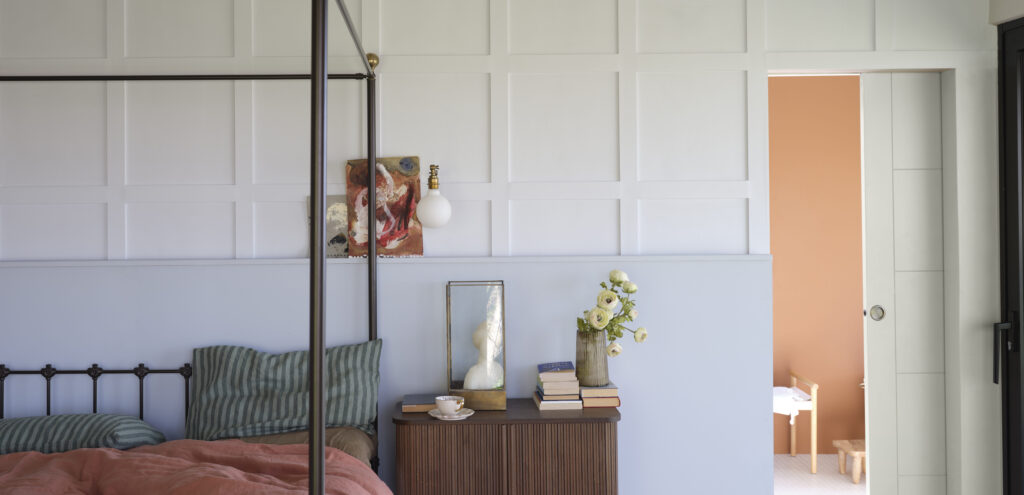Beyond the shores of Barcelona, some 150 miles south in the Mediterranean Sea lies Mallorca, a 1400-square-mile Spanish paradise. From azure views and roaring cliffs, to rich culture and charming villages—the sights of the popular European hotspot have inspired generations of artists and writers, including poet Robert Graves who is buried in the island’s northwestern village of Deià. The largest of the Balearic Island archipelago, Mallorca’s diverse geography and architecture are among the many reasons that make it a true 360-degree Mediterranean experience. Rest assured, one trip around Mallorca is enough to seduce even the most prosaic travelers.
Once you crack the surface, Mallorca has an incredibly rich history. It’s been ruled by a number of kingdoms throughout its history, including the Romans and the Moors; it’s also said that it was first colonized as far back as the 8th century BC—most likely by the Phoenicians. The remnants of Mallorca’s storied past are largely dominated by influences of Gothic and Baroque architecture. These influences can be seen throughout Palma, the island’s capital, along with a labyrinth of narrow streets which hint at the city’s Arabic history. Pieces of the island’s past—both natural and man-made—can be seen from coast to coast. These landmarks have stood the test of time and will always remain, so long as we help to preserve and respect them.
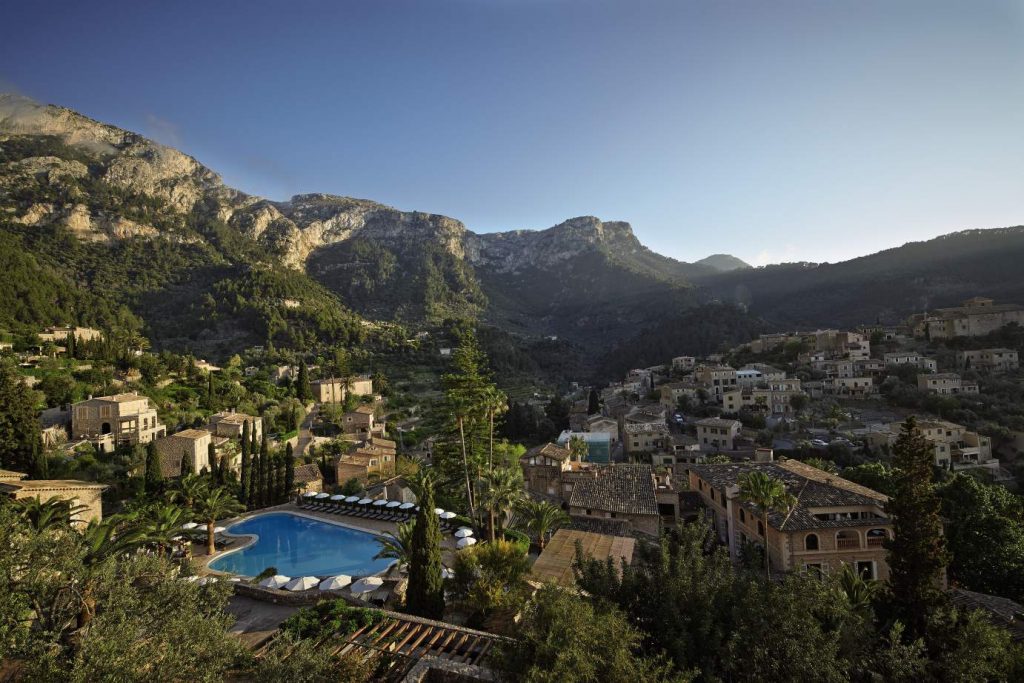
The island experienced its first tourism boom following the 1950s. However by the ‘70s, it had fallen victim to dreary package hotels and visitors donning straw hats, the sort thing that ultimately does more harm than good. But despite the fact that the island was attracting millions of European travelers annually—over two million from the U.K. alone—there was cause for concern. Much like the limestone embellishing its coasts, the bedrock of Mallorca’s notoriety and culture began to erode. However, in the years that followed, save for a couple ups and downs, Mallorca redefined itself as the world-class destination it always was.
The island has made leaps and bounds from its reputation in the ‘70s, but with its sister island Ibiza—a place known for being heavy on debauchery and light on culture—constantly making headlines, breaking free of the stereotype wasn’t easy. Considering Ibiza’s likeness, it’s easy to see why the distinguished traveler would have second thoughts about visiting. However, Mallorca has always been much more than bars and braggadocio. Sure, there are still a few spots on the island such as Magaluf—where you’ll see an over influx of tourists looking to indulge—but most of the island is an iconic, cultural gem just waiting to be explored. One of the telltale signs of its progress in recent years is English business magnate Richard Branson’s purchasing of an estate on Mallorca’s northwest coast known as Son Bunyola, a property which spans nearly 700 acres boasting three villas available for exclusive hire. Nothing says success like an endorsement from Sir Richard.

Where to go and what to do:
Deciding where to go and what to see in Mallorca is both easy and difficult for exactly the same reason: there is an overabundance of great sights, experiences and places. The type of trip to expect completely depends on you, the traveler. You can avoid the crowds and high rise hotels on the island if you try. Mallorca’s western and eastern regions are ruled by mountain chains, the Serra de Tramuntana and Serra de Llevant respectively. Though there’s certainly a lot to do in the island’s central region plain Es Pla, which includes Palma, the real journey begins when you strike out across the countryside, exploring hidden beaches, quaint olive groves and rustic villages. So rent a car, hail a cab, get on the tram, ride a bike and explore everything the island has to offer. Here are a few of our top picks:
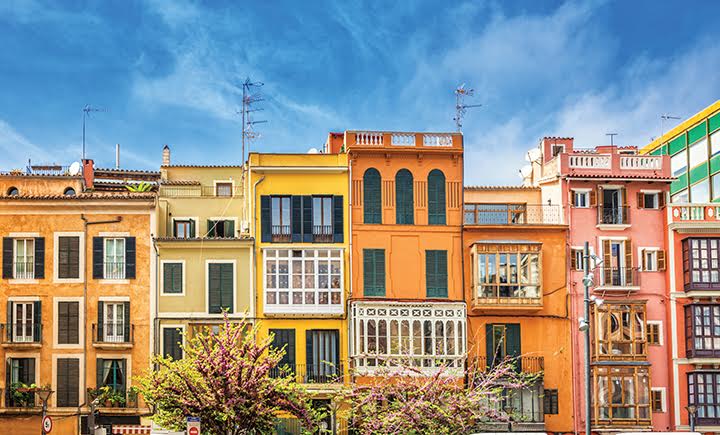
Palma
Though it’s certainly not scenic, you won’t want to miss exploring the island’s capital. It serves as Mallorca’s central hub, a great piece of any itinerary. Palma is a former Moorish casbah (a walled city) which makes it ideal for wandering. In Old Town, one can get happily lost drifting down the myriad of narrow alleys, stumbling upon courtyards and Gothic architecture at every turn. The highlight of this maze-like quarter are the Banys Arabs (or Arab Baths), the last remnants of the 10th century Arabic influence. If throwback architecture is your thing, hitch a ride on the Sóller Railway and visit Bellver Castle west of the city; Bellver is one of the few circular castles in Europe and offers unbridled views of Palma.
For how historic the city can look, Palma is surprisingly progressive—especially when it comes to food. Organic produce and markets are a huge part of the local lifestyle and the social scene. Mallorca in its entirety is beginning to become something of a foodie destination with its great tapas bars and Michelin-starred restaurants like Marc Fosh on Carrer de la Missió in Palma. Getting lost in the alleys and sights of Palma may be enough to steal your heart but it’s only the beginning.
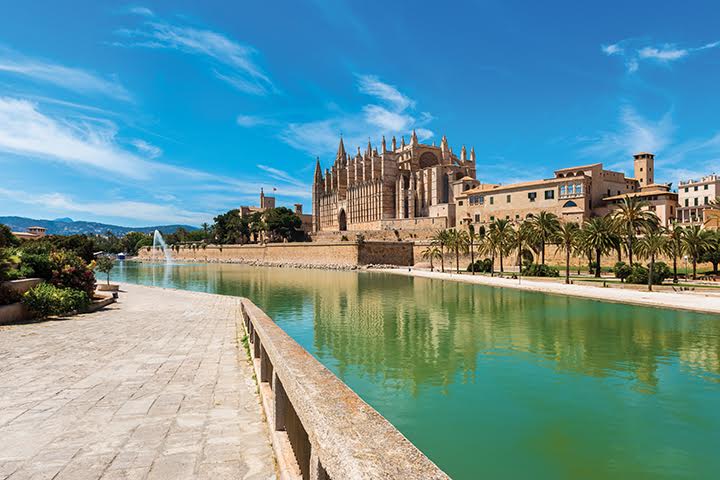
Palma Cathedral
It’s perhaps one of the more touristy activities you can engage in, but visiting the Cathedral of Santa Maria of Palma is hardly something you want to skip. Also known as La Seu in Catalan, the cathedral was constructed on the site of a mosque over the course of nearly 400 years— between 1229 and 1601. Its awe-inspiring Gothic façade is the city’s biggest landmark and the interior, designed by Antoni Gaudí in the early 1900s with installations by contemporary artist Miquel Barceló, makes it one of the most unique cathedrals the world over. Oh, and make sure you get there early to beat the ensuing afternoon crowd.
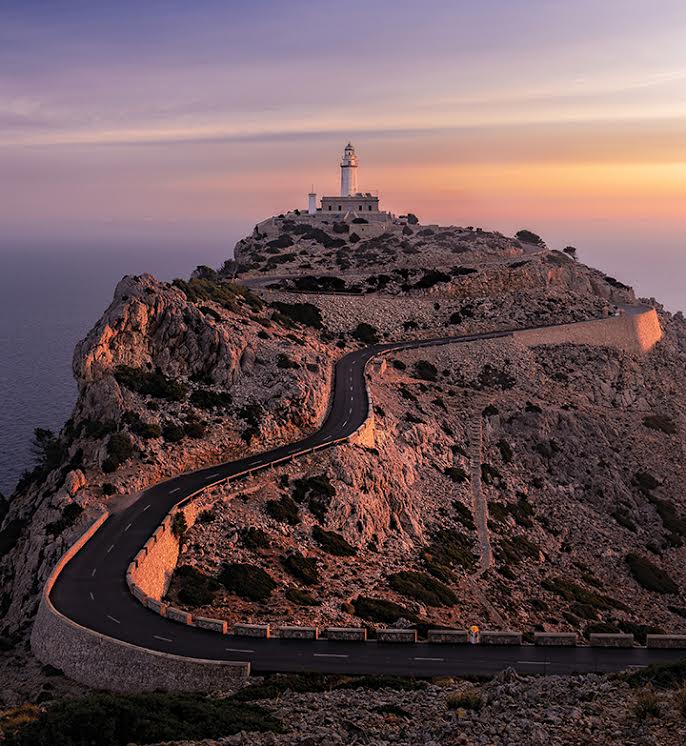 Cap de Formentor
Cap de Formentor
Located in the north, Cap de Formentor is one of the most stunning stretches of coastline on the island near Alcúdia and Port de Pollença (which are both great places to visit). Its razor-edge cliffs of limestone lined along the edge of the sea make it one of the best sight-seeing opportunities in Mallorca. Paths lead to everything from lighthouses to an old watch tower, looking out over the Mediterranean.
Deià
Widely known as the home of famed poet Robert Graves, this tiny, romantic village in the northwest has been home to writers, actors and musicians for decades. Deià is roughly 10 miles from Valldemossa and sits on the edge of the Serra de Tramuntana, vibrant with vast almond trees, citrus orchards and olive groves. Graves used the town as a setting for many of his stories and when the sun descends behind the hillside, darkening the hues of the sea beneath the cliffs, you’ll know exactly why so many have fallen in love with its charm.
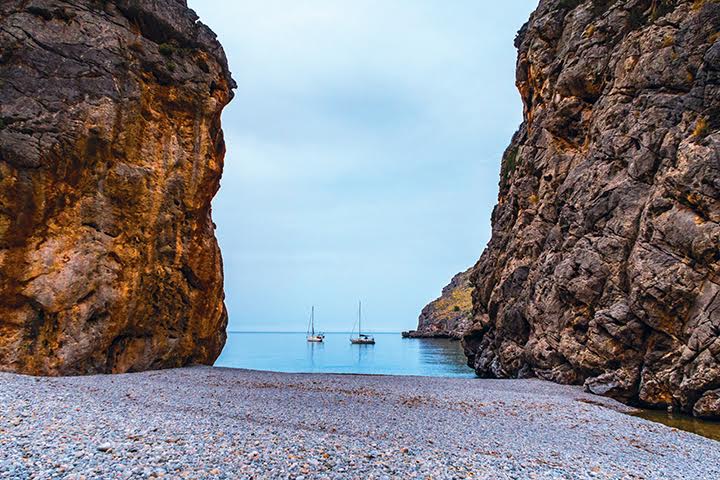
The Road to Sa Calobra & Torrent de Pareis
Sa Calobra Road (ma-2141) is perhaps one of the most scenic roads in the world. Just off the main road through the Serra de Tramuntana mountains, this tight, 8-mile long stretch features many curves, most of which hairpin (a U-shaped turn). The road, handmade in 1932, is carved through jagged ridges and striking ravines, and has been a hot ticket for cyclists for years. Taking the roads up to the northwest coast is very rewarding, as there are incredible vantage points overlooking the sea as well as an unspoilt beach or two. At the end of Torrent de Pareis, an incredible hiking route which follows through a vast canyon and a network of rock tunnels, lies Cala Sa Calobra. The small beach is wedged between a gorge that opens out to the sea, revealing its tranquil turquoise waters.
Cuevas del Drach
On the east coast of Mallorca lies a subterranean wonder in the Cuevas del Drach (or Dragon Caves for short), once used by locals to hide from pirates. Accessible by boat, the caves stretch to a maximum depth of over 80 feet below ground level. They also contain one of the largest underground lakes in the world. Stalactites hang above like limestone sicilies as you pass through the crystal water, and at the ride’s conclusion, there’s a live orchestra concert on a boat. If you’re on the east coast, try to visit Mondragó Natural Park which is about a 20-mile drive south of Porto Cristo.
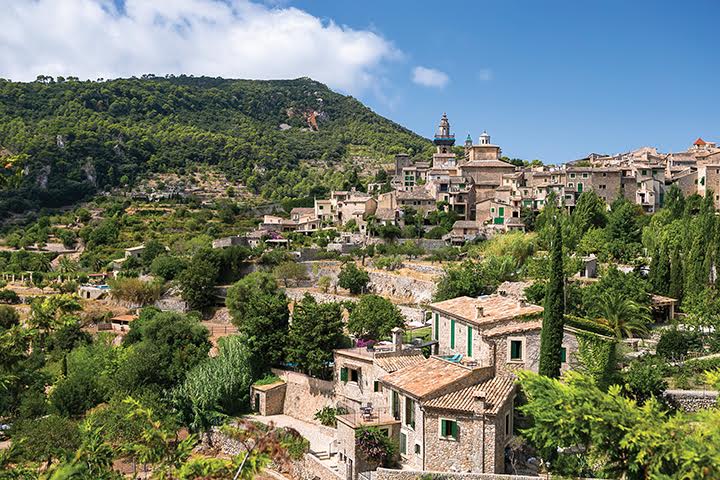
Valldemossa
One of the best ways to spend one’s day is exploring Valldemossa, an old car-free, cobblestone village in a small corner of the Serra de Tramuntana. The village is the former home of famed artists George Sand and Frédéric Chopin, the latter of which naming it as the most beautiful place in the world. Valldemossa is completely surrounded by magnificent forest hills and striking rural views. Its stone architecture is perhaps one of its most alluring features. There’s also a street market on Sundays, ideal for sourcing produce and perhaps a glass of freshly squeezed OJ.
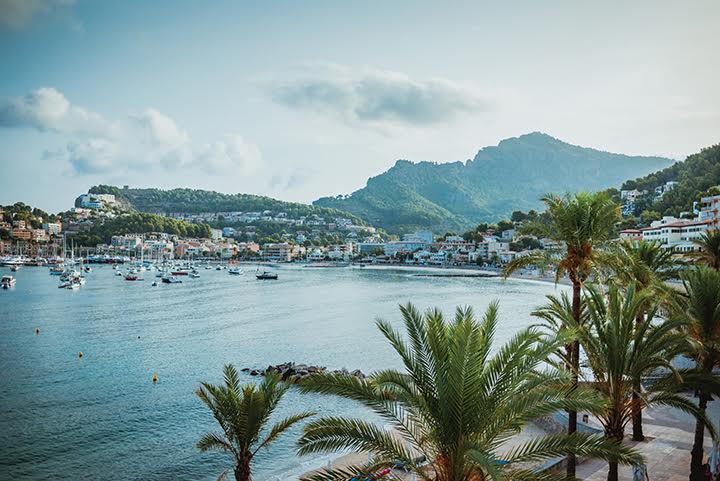
Port de Sóller & Fornalutx
Sóller is a peaceful coastal town with an elegant harbor and a trendy promenade of cafes. The town lies offset a lush valley of orange groves between the mountains and sea, and boasts some incredible indulgences like locally-made ice cream. Be sure to stop by Agapanto for a seaside dining experience few can imitate. Above Sóller, you can also visit Fornalutx, which is often referred to as “the prettiest village in Spain.” The air is perfumed with citrus amidst stone buildings and red-tiled roof homes.
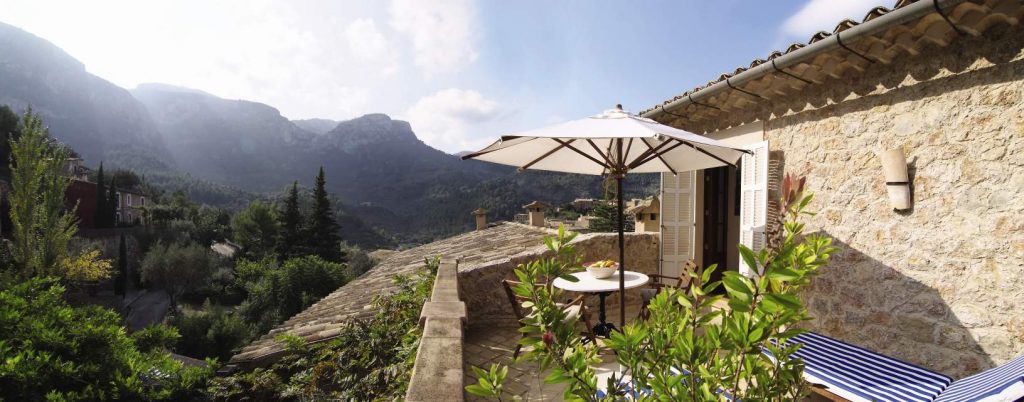
Where to stay:
When it comes to where to stay, it’s best to avoid the party hotels in the south and find a quiet retreat that suits your style. There are five-star options throughout the island and no shortage of villas to rent. But perhaps one of the most interesting properties to stay at is Belmond La Residencia. The property—which was also previously owned by Richard Branson—is set right in the village of Deià. La Residencia is a peaceful 67-room retreat set inside a 400-year-old two-manor house which also features an extensive villa. The hotel has adopted the artistic mentality of the village and is a dramatic deviation from the vibe in Palma. The resort features several dining options, most notably of which is El Olivo which highlights Mallorcan cuisine. All-in-all, you’d be hardpressed to find a traveler that still views Mallorca as overdeveloped while walking the lush grounds of La Residencia.
When to visit:
The best time to visit the Balearic Island’s crown jewel is not all that divergent from many destinations in the U.S. Generally speaking, Mallorca experiences mild winters of about 50 degrees, however those looking to make the most of their visit should book between May and September as many of the best hotels, La Residencia included, are at peak operation and temperatures are typically in the 80s. While visiting the island it’s also important to respect the local culture during these busy seasons, as negligible tourism can be detrimental to this little slice of paradise. From the moment you arrive in its capital, Palma, until the days when you set out across the countryside to the island’s quaint villages, it’s almost impossible not to fall in love with Mallorca—a real Mediterranean dream.

